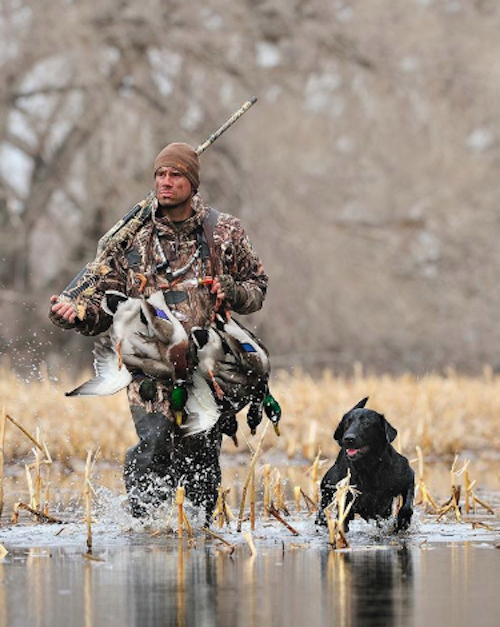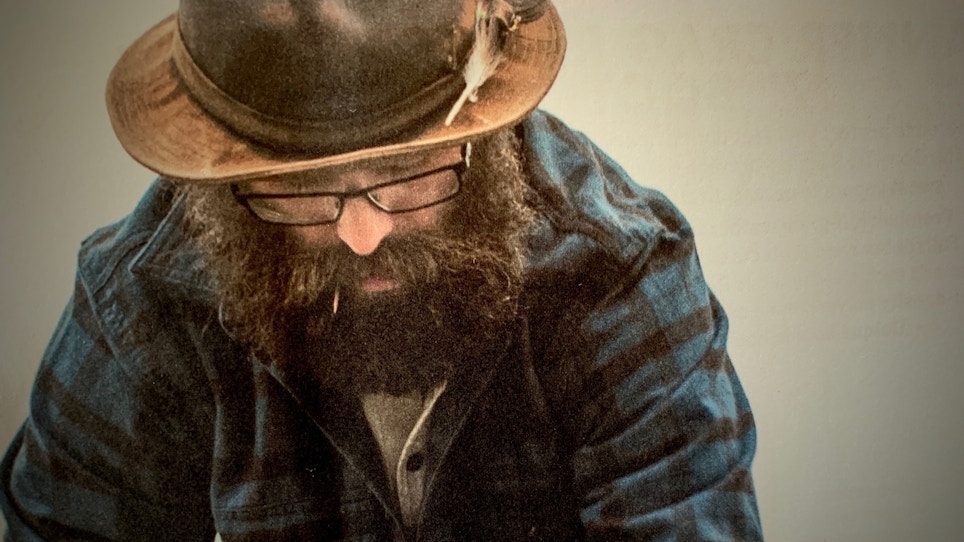My daddy wears a toothpick. It rests behind his ear. It’s there when he needs it. My mama would save the family from embarrassment on Sundays by grabbing it and stashing it in the cup holder on the drive to church.
And there was my mom’s cousin. When I was just a small child, he was a teenager. And he kept a toothpick in his mouth, and he'd roll it around and sometimes it would show up, visible on the outside. But other times it was all the way in his mouth, hidden. And I thought to myself, “I can’t wait until I’m old enough to get a whole toothpick to fit in my mouth.” This a thought in a little girl’s head. Maybe a redneck little girl.
This toothpick “trick” is exactly what you can see actor Tom Hardy doing here. Hardy was nominated for an Oscar for his turn as a trapper in the period film The Revenant.
This thing — a deeper meaning of men and toothpicks — has manifested itself most recently in a Filson catalog. The outdoor clothing and accessories manufacturer is often recognized among hunters, ranchers and farmers for their iconic tin cloth jackets, which they've been making for 121 years. And if you look at the photo at the top of the page, you'll see a Filson model with a toothpick hanging from his mouth.
Now I ask you to think through the process that’s behind that photo.
There’s a photo shoot and professional photographers and models and likely creative directors. Someone is tasked with the job of gathering all the props and making a shot list. And somewhere along the way in a process that actually is rife with mind-numbing, tedious details, somebody said something to the effect of, “we need to make sure we get a guy with a toothpick in his mouth.”
Why? Because that toothpick is a symbol of a certain type of man that channels what Filson works to epitomize. It signals either the alpha dog or the man's man or both. I can't count the number of times I've shown up at a hunt club or hunt camp and the camp cook is prepping supper with a toothpick in his mouth. Or the rancher-turned-hunt guide steps out of his pickup truck with a barely-visible toothpick stashed underneath his cap, behind the bill, but just off to the side.
Look at the hands featured in this Filson photo, posted to the company’s Instagram account. It honors the lifestyle of a working man. Men who have fingertips with dirt or grease or both stained down into the skin so the lines of his thumbprint are made visible.
In “The Revolt of the Elites and the Betrayal of Democracy,” American historian and social critic Christopher Lasch wrote, “(the thinking class) lives in a world of abstractions and images, a simulated world that consists of computerized models of reality — ‘hyperreality,’ as it has been called – as distinguished from the palpable, immediate physical reality inhabited by ordinary men and women.”
The toothpick, anecdotally at least, seems to find itself in these physical realities inhabited by ordinary men.
Lasch charges the thinking class with, "seceding from, not just the common world, but reality itself." Even more, Lasch wrote these observations in 1995 when the internet was barely a thing. If secession is how an American historian would describe what the thinking class was choosing to do nearly 25 years ago, now it seems fair to say the entire country has seceded from its former self.
That leaves these other men, toothpick men, on an island that's threatened by lapping, greedy waves eroding a once-central physical reality that depends on craftsmanship or the land and whims of the weather.
Through participative and online engagement, lifestyle brands and hunting and fishing communities are learning that there are many on the outside looking in. They are those who are drawn to the island, the physical life that so few men are actually living, but so many aspire to. Why do you suppose some hunters take such a liking to food plots? What a perfect escape into a physical reality that involves gathering soil samples, discing, planting, bush-hogging, fertilizing, growing stuff, growing stuff and growing stuff. Now a hunter has a reason to nail a rain gauge onto his fence post, and like other farmers, he can pray off a late-season frost in spring and curse the lack of rain in the summer months.

We see these aspirations in the disaffiliation of millennials — disaffiliating from the hyperrealities Lasch observed. They're putting backyard chickens on .33-acre suburban lots and planting vegetable gardens in the summertime. They want to make things they can hold in their hands, gather and bring them into the kitchen and lay each one on the counter at suppertime.
Look, too, at the reasons hunters hunt. The prudent motives are mixed and woven into reasons that have little to do with meat or the moment the trigger is pulled or the bowstring is released. Yes, they hunt for meat, but they also cite hunting as a pathway to get out into nature and spend time with family.

For some — like my mom's cousin and, apparently, the actor Tom Hardy, along with skilled tradesmen, farmers and ranchers — the toothpick likely come as an accessory at the start of each day, along with the pocketknife, handkerchief and loose change. It's an unconscious byproduct of routine.
For others, maybe the toothpick is a conscience effort to hold onto the physical reality they once knew or only enjoy in small doses. Matthew McConaughey is often photographed with a toothpick hanging from his mouth. He's another Hollywood celebrity, yes. But as rich celebrities go, most would agree McConaughey has some redeeming qualities like his affection for bourbon and allegiance to Texas Longhorn Football. Perhaps the toothpick serves as a reminder of where he comes from, and that his brother’s name is Rooster.
The toothpick, after all, is transforming.
So if you tend to naw on a toothpick, whether you're a hunter out in the woods tilling ground for a food plot or a small-time rancher standing by an old tub-turned-cow-trough, waiting for it to fill with water, know that you are having a moment. If you're a man's man or a working man, be glad of it. You're a member of a different kind of thinking class: the liberated thinking class. The modern thinker is tied to whatever smartphone notifications and hyperrealities demand his attention. But your mind is free to go where it pleases, while your hands do the work.









